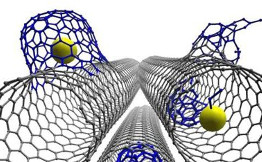Action: COFUND (Co-funding of regional, national and international programmes)
Duration: 5 years (2019 – 2024), 2 calls, 5 PhDs per call
Duration of PhD contract: 3 years
Budget: ~ 1.6 M€
Funding: European Commission, Ecole Centrale de Lyon and RMIT (Melbourne, Australia)
Project Coordinator: Dr. Christian Grillet, CNRS/Ecole Centrale de Lyon
Scientific coordinator France: Prof. Christelle Monat, Ecole Centrale de Lyon
Scientific coordinator Australia: Prof. Arnan Mitchell, RMIT
Administrative coordinator: Dr. Benedicte Martin
Partners: Ecole Centrale de Lyon, RMIT, Universite de Lyon, Pulsalys, Thalès, STmicro, Naval group, SOFRADIR, 3Doxides, Minalogic, Lyonbiopole
We seek talented and ambitious PhD students to join our new cotutelle PhD program ECLAUSion. ECLAUSion will build on ECL and RMIT outstanding reputation of research excellence, state of the art research facility in micro-nanofabrication and nanotechnology platform, and the rich Lyon and Melbourne area ecosystem in biotechnology and ICT industries to offer a multidisciplinary, cutting edge research program initially centered around 4 topics impacted by nanotechnologies i) functional materials, ii) electronics and computing architecture, iii) photonics and photovoltaics, iv) biotechnology and healthcare.
ECLAUSion, with its strong academic researchers and industrial support for the first time gathered within a single flag, provides a unique opportunity to develop global (across continents) crossdisciplinary PhD training & research with impact ranging from fundamental science to original technological innovation underpinned by nanotechnology.
The domains of application cover key economic sectors for investment and growth and have been flagged as research collaboration priority in the Australian-EU S&T roadmap: semiconductors, microelectronics and photonics, telecommunications, ICTs in general, energy, health and well-being, biosensors.








